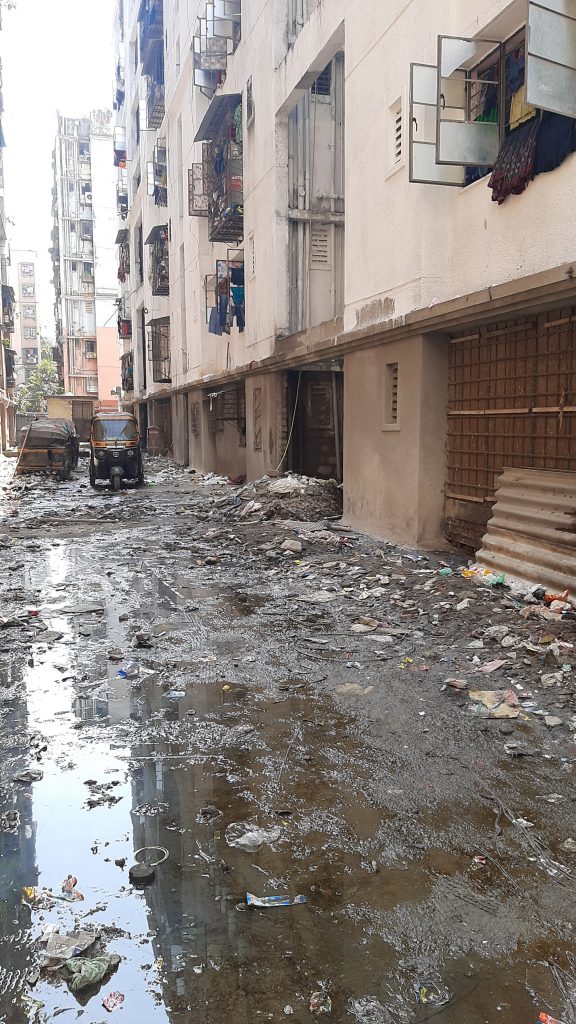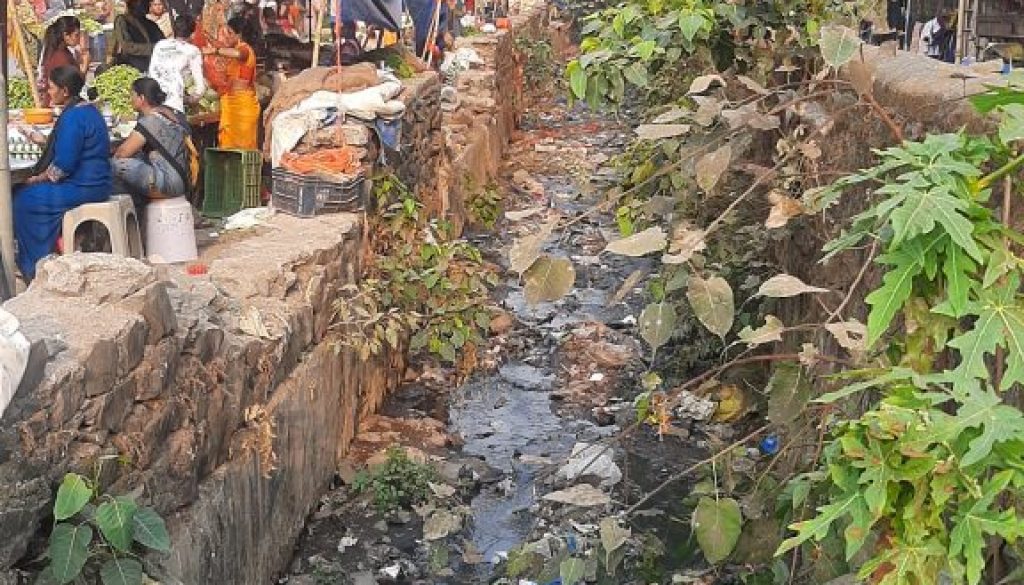ARISE learning event at the Gobeshona Conference – A report and reflection
By Vinodkumar Rao
On 31 March 2022, SPARC’s ARISE virtual session at the 2nd Gobeshona Global Conference took place. Vinodkumar Rao from SPARC chaired the 90 minute session titled “Urban Marginality and Resilience Expectations – learning from ARISE”. Presenters included Shrutika Murthy and Inayat Kakkar from TGI, Wafa Alam from BRAC – JPGSPH and Aditya Pradhyumna from APU.
The session aimed to explore the less-discussed aspects of urban resilience, which has had a lot of attention recently. Urban resilience requires actions from duty bearers and policy makers in investing into building resilience among communities, particularly the poor, who disproportionately bear the brunt of catastrophic and slowly induced climate related and other urban vulnerabilities.
But what does our experience in engagement with poor urban communities tell us about their vulnerabilities, organically developed resilience strategy, and their expectations from others, particularly those that are accountable for their well-being in general? Do we need to look at urban resilience with a new lens and challenge some of the problematic viewpoints that have potential to reduce the role of governance and accountability and replace them with self-resilience?
Indian waste workers bearing the brunt of climate change
Shrutika Murthy and Inayat Kakkar presented on the living and working conditions of waste workers in Shimla, Guntur and Vijaywada. Shimla is a city situated in the hilly northern India while Guntur and Vijaywada are situated in the southern part of India. The waste workers live precarious lives – they reside on informal living conditions, have poor and fragmented access to public health care forcing them to seek expensive and unaffordable private health care, and they face intersectional discrimination on the basis of caste and gender. There is little recognition of their contribution, and, in many cases, poor access to documentation that establishes their rights as citizens.
Waste workers often work in extreme weather, such as extreme heat in summers in the south and extreme cold in winters in the north, resulting in heightened exposure to climatic vulnerabilities. They are also constantly exposed to harmful wastes due to the nature of their occupation.
Many live on precarious and untenable lands and are therefore under constant threat of being displaced due to extreme climatic events, beyond facing evictions from state institutions. Gradual informalisation of even those who did have formal employment arrangements with the state institutions – such as the Municipal Corporation in Shimla for example – only worsens the precarity of their occupation.
The waste workers’ living conditions demonstrate our argument – in the absence of state action, this marginalised community, while disproportionately bearing the effects of climate change, may seem resilient, but is this the case?

The informal systems built by informal settlement residents in Dhaka
Wafa Alam’s presentation reiterated Bangladesh’s position among the top climatically vulnerable countries. Large numbers of people live and work informally, and they will bear the brunt of climatic events more than others. Most settlements are built on empty Government and private land in low lying areas prone to flooding.
In some cases, people flee lands due to climatic events, only to resettle in another slightly less vulnerable area. For example, Kolyanpur Pora Basti – an informal settlement in Dhaka -is situated in a low-lying area that frequently floods. Residents are migrants from Bhola – a southern district – where gradual coastal erosion made the land unliveable. In the absence of adequate Government support, and over time, residents built systems themselves (although informal) to meet their needs. Residents pooled money and got water connections, particularly to tide them over in times of flooding when access to clean water and sanitation is normally severely affected.
During COVID, communities developed self-protection mechanisms, such as crowd control at public toilets and other amenities and setting up wash stations. Residents even complained about mismanagement of relief support and distribution, as they were not involved, pointing to a lost opportunity to use their networks for more efficient distribution of scarce relief resources.
This example of communities from Kolyanpur Pora Bastimay make them seem resilient, and they clearly are. However, while this should be appreciated, should these efforts not be supported by the state to make it more robust?
Public health systems investment is essential
Aditya Pradhyumna’s presentation highlighted the need to invest in health equity and to strengthen public health systems in India. Summing up the experience shared by the other speakers, he highlighted the increased health vulnerability faced by the urban and rural poor due to their living and working conditions and exclusion from public services.
There is now adequately established knowledge that climate change affects health and as such their individual vulnerabilities are not divorced from each other. We are seeing increasing prevalence of non-communicable diseases such as diabetes, increased wasting and stunting across India, worsening air quality due to pollution, and excessive heat, all of which is exacerbating the existing vulnerabilities of the poor. With the already weak existing public health system, it has no capacity to absorb heightened challenges due to climate change. Existing discrimination on the basis of caste, gender, and religion in the public health systems make them practically inaccessible to the most marginalised.
Aditya’s presentation points to deep gaps in the ability of public health systems to be resilient, and highlights that drastic improvements are required to build them.
SPAs: Addressing the needs of the local context
Vinodkumar presented on the Mukuru Special Planning Area (SPA) as a community led resilience building example on behalf of Smruti Jukur. The brief presentation largely spoke of how a SPA development of a large informal settlement such as Mukuru in Nairobi allows building development plans based on what works locally. While urban development norms and regulations have specific standards to be followed, they most often turn development of a dense urban informal settlement into something completely untenable. Therefore, the Mukuru SPA developed alternative norms that addressed the needs of the local context, while adhering to the key principles of urban planning. This is an example of collaborative community-led resilience building with investment from state institutions.
Adaptations are possible and important pathways to countering climate induced urban problems, however, the most marginalized must be a central part of its discourse.
Urban vulnerabilities to climate change are manifold and intersectional
In much of the discussions around effects of climate change in the contexts of urban vulnerable populations, the focus is on the impact to livelihoods. For example, waste pickers’ issues with climate and environment are manifold. However, very often their particular vulnerabilities are seen only from the lens of their occupations and less so on their basic needs for healthy living – such as housing and access to basic services – and even less so on seeking ways to pull them out of precarious livelihoods with daily exposure to harm.
The recent COVID pandemic showed us that urban vulnerabilities can immediately become visible and intensify in situations of pan-geographic catastrophes. However, many existing fault-lines often remain less visible due to their micro-occurrence in separate geographies. For example, those living and working informally face different challenges across cities, but their issues are not central to urban planning, and need large-scale disruptions, like the COVID pandemic, for them to become visible. Very often, with little or no intervention by state institutions, such unequal systems inch back to ‘normal’ and may be considered as a show of resilience, but the fault lines remain waiting for a catastrophe to lay them bare again. In thinking of building resilience, it is important that we understand the health disparities and the challenges in accessing health care systems in urban areas.
There is now a lot of civil society interest in addressing climatic vulnerabilities faced by the poor. And there are spaces where it is possible to bring the lives of the poor to the centre stage of planning. Urban planning, for example, now acknowledges informality and development plans can use this knowledge more meaningfully. The Special Planning Area (SPA) methodology is an example.
Making resilience-building central to urban planning
What spaces for adaptation and building resilience exist? Perhaps we have romanticised the living and working of the poor as acts of ‘resilience’ and as ‘contribution to a sustainable environment’. But are they largely just a reflection of choices available to them? We ask for access to slum housing that uses sustainable materials, but do we really ask if tenure security, safe housing and access to basic services precludes housing material choice? Should this not be a basic and blanket policy measure to be able to seek use of sustainable materials? Changing environment due to climate change requires new ‘sustainable’ ways of living and working, but are enough choices made available for the urban poor population living and working in informality to be able to practice them?
Much of this is now a part of mainstream ‘resilience building strategy’ discussions, but are we still far away from recognising this problem as central to urban planning and policy making? Policies must recognise the specific urban inequities that exacerbate problems for the poor more than they do for the general urban population, as well as mitigation strategies that themselves may further vulnerabilities of those already living and working on the margins of precarity.
While it may seem easier to tackle issues separately, the challenges are interconnected and the vulnerabilities intersect. In the context of climate change, if the socio-economic issues due to weak governance and their intersection with deep impact to human settlements is not acknowledged adequately, building resilience will remain a distant dream in countries of the global south.
Adaptations are possible and are important pathways to countering climate-induced urban problems, however, the most marginalized must be a central part of its discourse.
Image credit: Images by Darsheet Vora, Intern at SPARC
